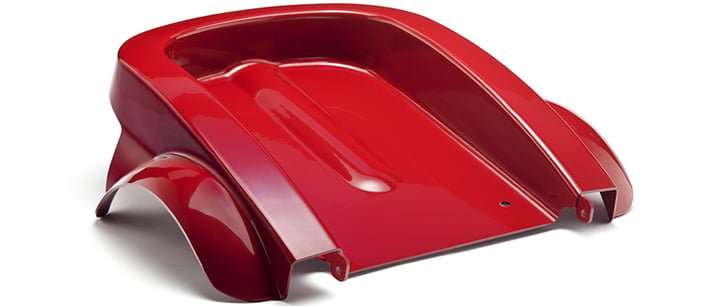
The thermoforming process involves so many variables that mistakes in the final thermoplastic product are common. Material characteristics, heating consistency, pressure levels, and moisture can all tweak the results of the process in unexpected ways. Because of these variables, troubleshooting the thermoforming process can be tricky.
Industrial Custom Products’ thermoplastic experts recommend watching for the following signs of some common thermoforming hiccups in order to resolve your production woes.
Common Problems in the Thermoforming Process
Problem: Discoloration, scorching, wrinkling, distortion, white corners, or incomplete formations
Cause: Improper Heat levels
Your heat levels may be poorly suited to your materials if…you are getting results that are discolored, scorched, wrinkled, distorted, or incomplete. Excessively high heats can lead to discoloration, scorching, or wrinkling.
Temperatures that are too low can leave you with distortions, white corners, or incomplete formations. Heating a material too quickly is also a common error during the thermoforming process.
Centering your troubleshooting process around heat is a good starting point for troubleshooting most problems.
Problem: Bubbles and blisters
Cause: High Moisture Levels
Your moisture levels may be too high if… your thermoplastic products are coming out with bubbles and blisters. Too much moisture can result in bubbling and blistering, in part, because of how the moisture evaporates with no way to escape.
Working with high-moisture thermoplastics may require you to increase the soak time and heat materials from both sides, but Polycarbonate takes it one step further. Polycarbonate or PC requires an additional drying process in an oven to prevent blistering and bubbling as it is hygroscopic in nature. This means that the material naturally attracts and holds water molecules from the surrounding environment.
If you notice moisture problems in your production, try adding in an additional drying process to troubleshoot this issue.
Problem: Lack of detail in final product
Cause: Weak or slow vacuuming
Your vacuuming may be too weak or slow if…your final product is lacking in detail. Without appropriately powerful and speedy vacuuming, you may end up with insufficient detailing or wrinkles and webs.
If your high-detail products are coming out with low detail outputs, the vacuuming may be to blame. Checking for leaks, increasing the number of vacuum holes, or adjusting the vacuum hole sizes can all lead to better suction.
Problem: ??
If you are not sure where to begin your troubleshooting, make a short list of the abnormalities you’re finding and determine whether they’re consistent from part to part.
The thermoforming process is only as temperamental as its components.
A vast majority of thermoforming mistakes can be resolved following the above. Still encountering issues you don’t see here? For expert assistance with your thermoformed part, contact Industrial Custom Products. Our engineers and materials experts are well-equipped to troubleshoot problem parts and processes.
Industrial Custom Products has decades of experience in a variety of industries using many different materials, processes, and technologies.
Contact us and speak with an engineer about your project at (612) 781-2255, or request a quote online. You will receive a prompt response.
Industrial Custom Products is a one-stop-shop for custom manufacturing and plastic fabrication, including: prototyping and product development, die cutting and dieless knife cutting, thermoforming and vacuum forming, large part thermoforming, CNC plastic routing, fabrication and assembly and drape forming.

